CITY OF THE DEAD

“Here every creed and race find an equal place.”
~excerpt from T&T’s National Anthem (Patrick Castagne)
I remember watching my favourite spaghetti western: The Good, the Bad and the Ugly (1968) when I was a teenager. The scene that stood out the most was when “the Ugly” was running around the cemetery hunting for the grave that concealed the gold. I thought this was so amusing. Imagine seeing someone doing this! I considered imitating this scene myself. Ironically enough I almost did… well the running part at least. You can read about it here.

Even though there is no gold buried at Lapeyrouse Cemetery, (none that I know of), I realize the cemetery itself is the gold; our National treasure, resting at the surface, that reflects our ‘melting pot of races’ society.
For the Grand finale on Lapeyrouse Cemetery, Aaron and I would like to show our appreciation to everyone who contributed to the ‘Lapeyrouse Trilogy’, and pay our respects to all the departed who have provided their service to the development of our nation. We hope that maybe, just maybe, you will develop a new-found appreciation for what Lapeyrouse has to offer, just like we have.

Lapeyrouse Cemetery occupies the first sugar-cane estate in Trinidad, formerly called Woodbrook Estate. It was owned by a French nobleman, Picot De Lapeyrouse who came to Trinidad under the Cedula of Population on 1783, which offered a land grant to anyone of the Roman Catholic faith who was a slaveowner.

The cemetery, opened in 1813, houses one of the oldest, legible graves, Samuel Chollet Esquire, buried in 1814 (below).



The 20 acres sprawl of Lapeyrouse Cemetery laments of a time racial segregation was the norm, even in death. Coloured and white corpses were buried separately, and slaves were buried on estate lands and not in the cemetery with freemen.
However, in 1827, Hans Schuler, a German immigrant employed as the Lapeyrouse cemetery keeper was fired. Apparently he failed to follow colonial protocol and buried coloured and whites without segregation. I guess Schuler got the ball rolling towards racial equality!

During slavery, free African slaves were buried in Lapeyrouse cemetery. Their graves were painted blue and tiled in shells. Although we weren’t able to definitively find any African graves, the beautifully tiled pattern at the back of this grave reminds me of this piece of history.
French grave- Lebre Family Tomb


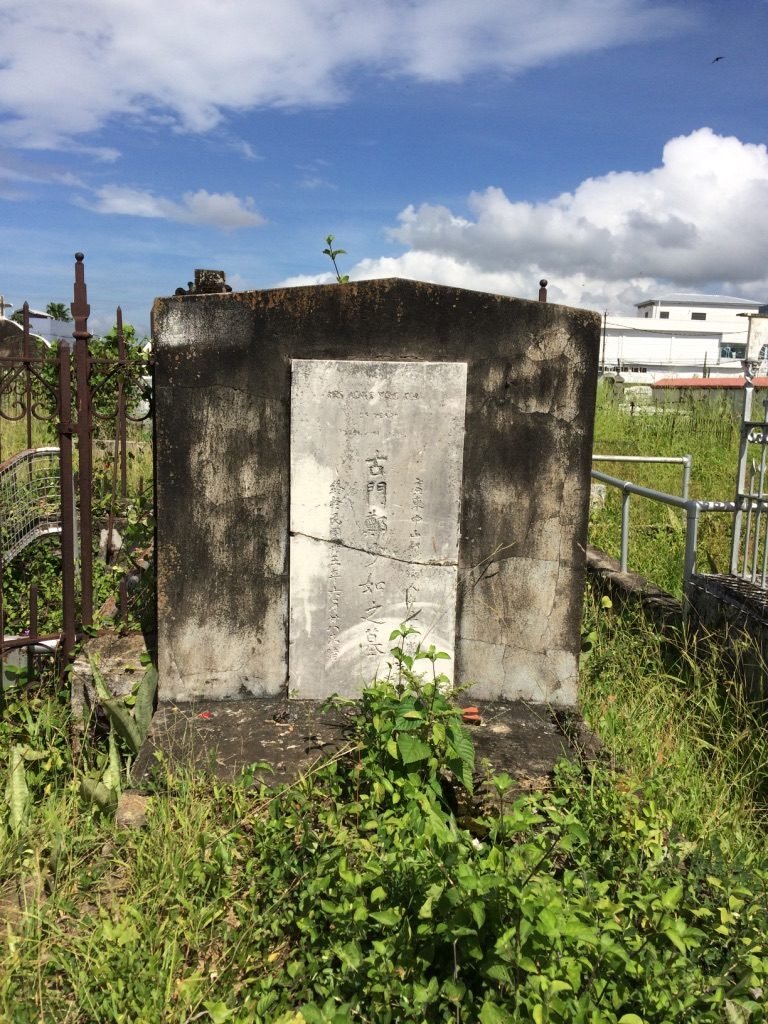

Freemasonry was introduced to Trinidad in the late 18th century. There are many landmarks that pay tribute to prominent masons.
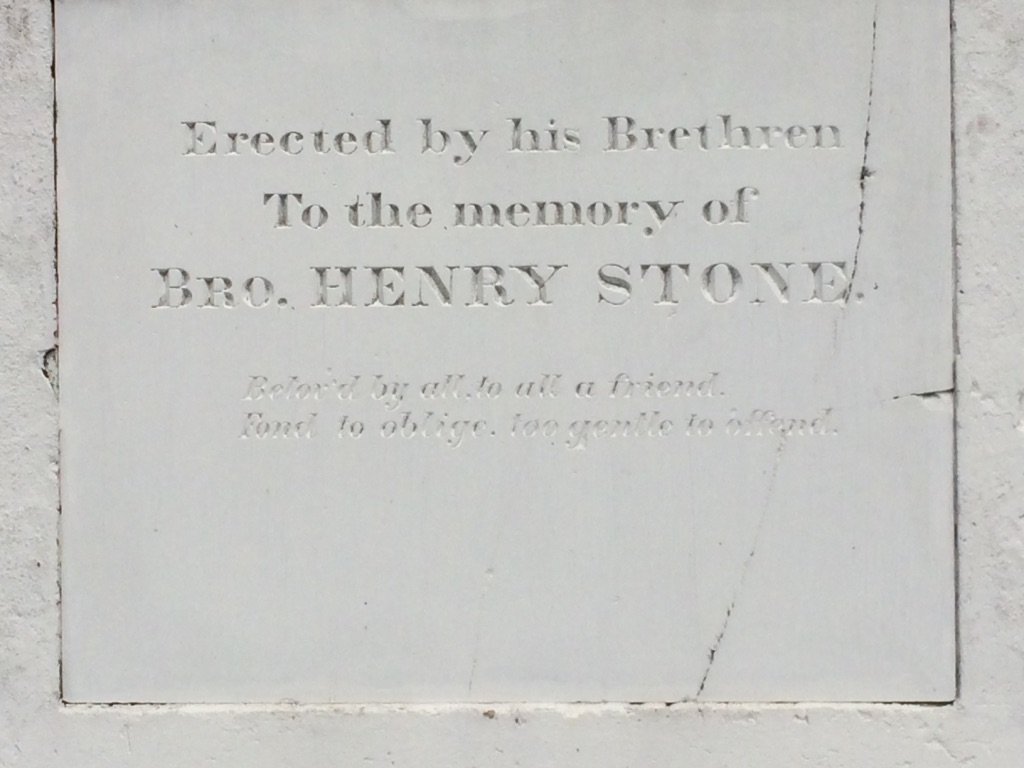

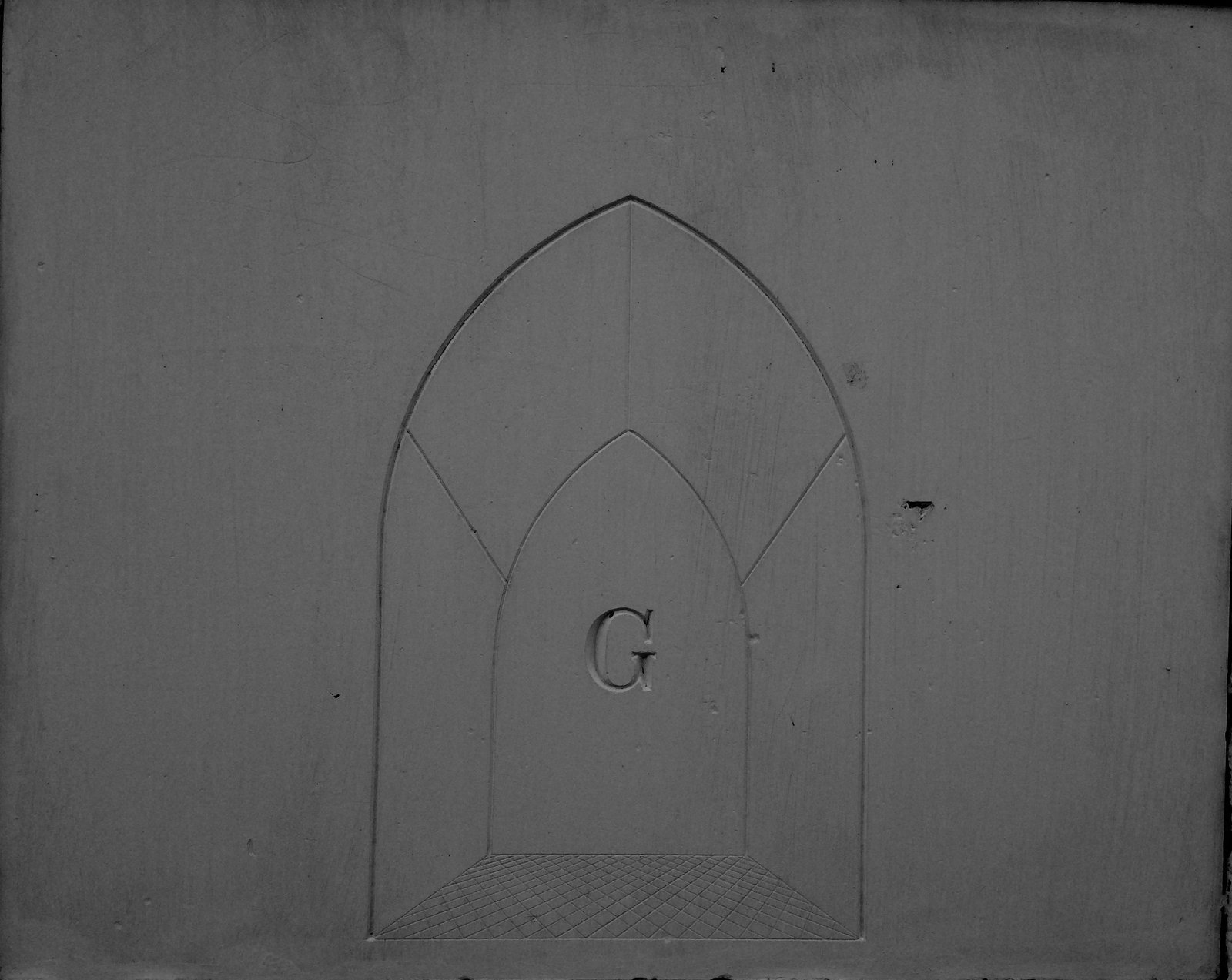
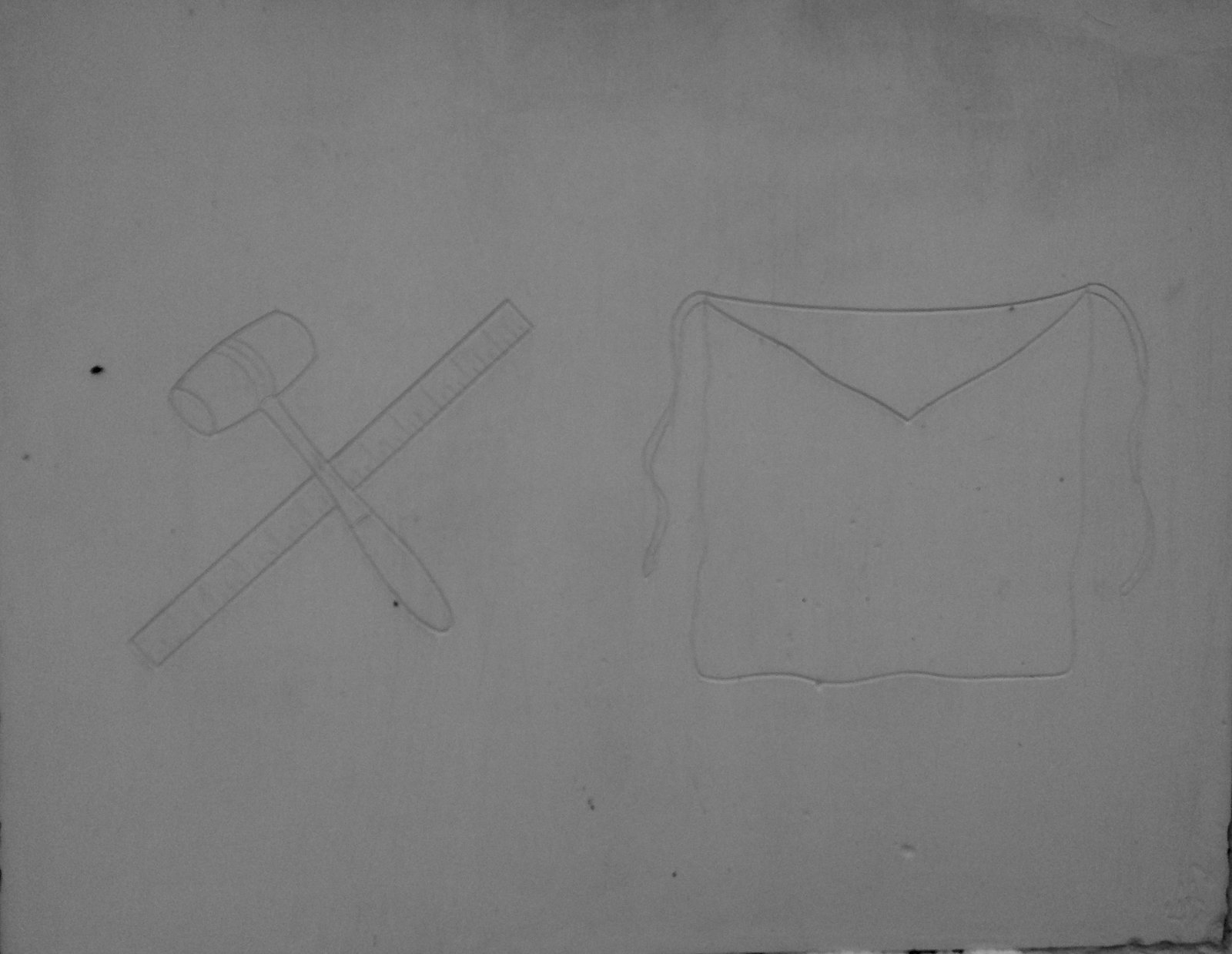
The engravings on each side of the column. Note the one that looks like a chisel and hammer.

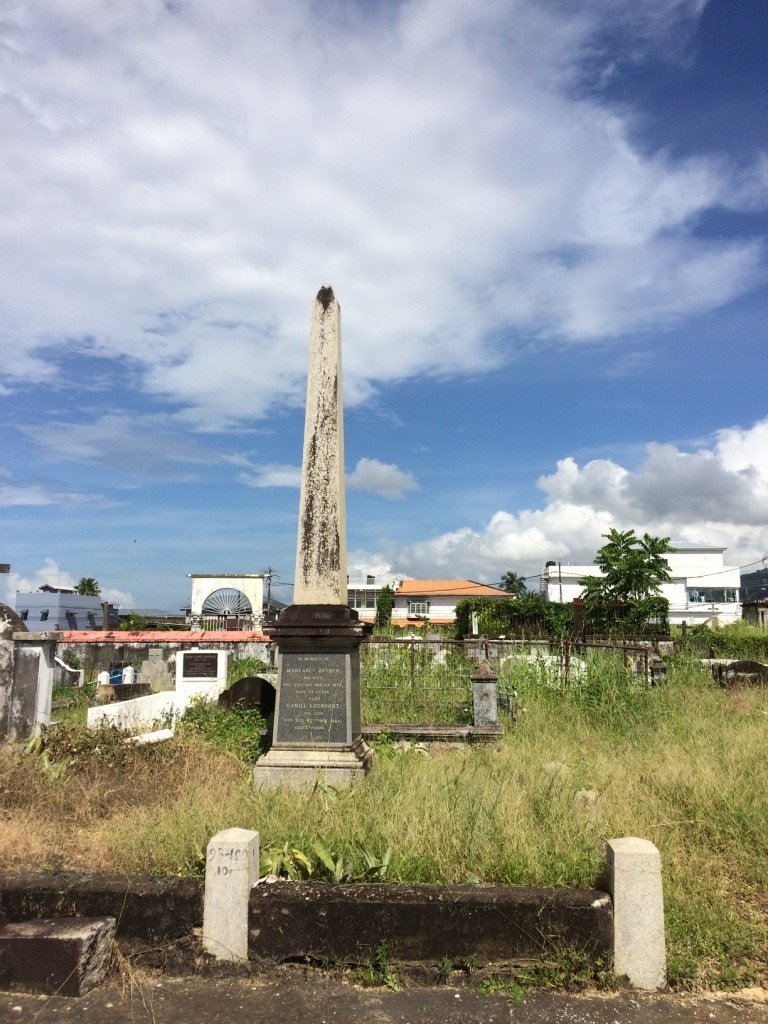
Obelisks standing tall


Some artworks are handcrafted from white Carrara marble from Italy. Michelangelo, the Italian artist used this same material for his sculptures.
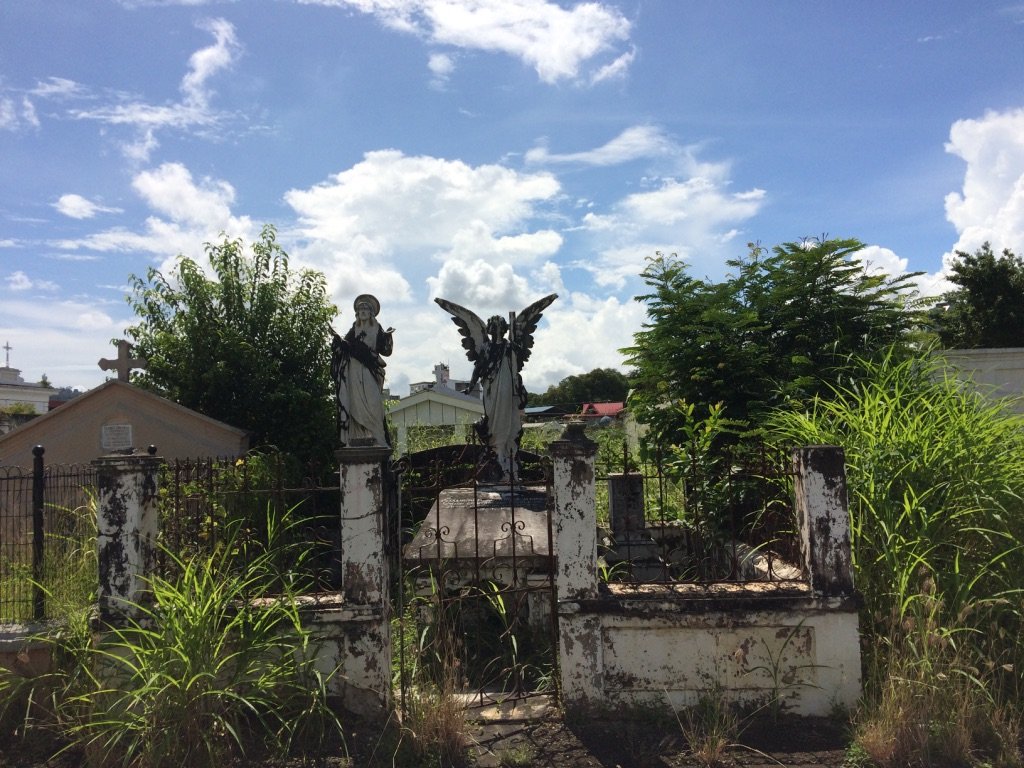

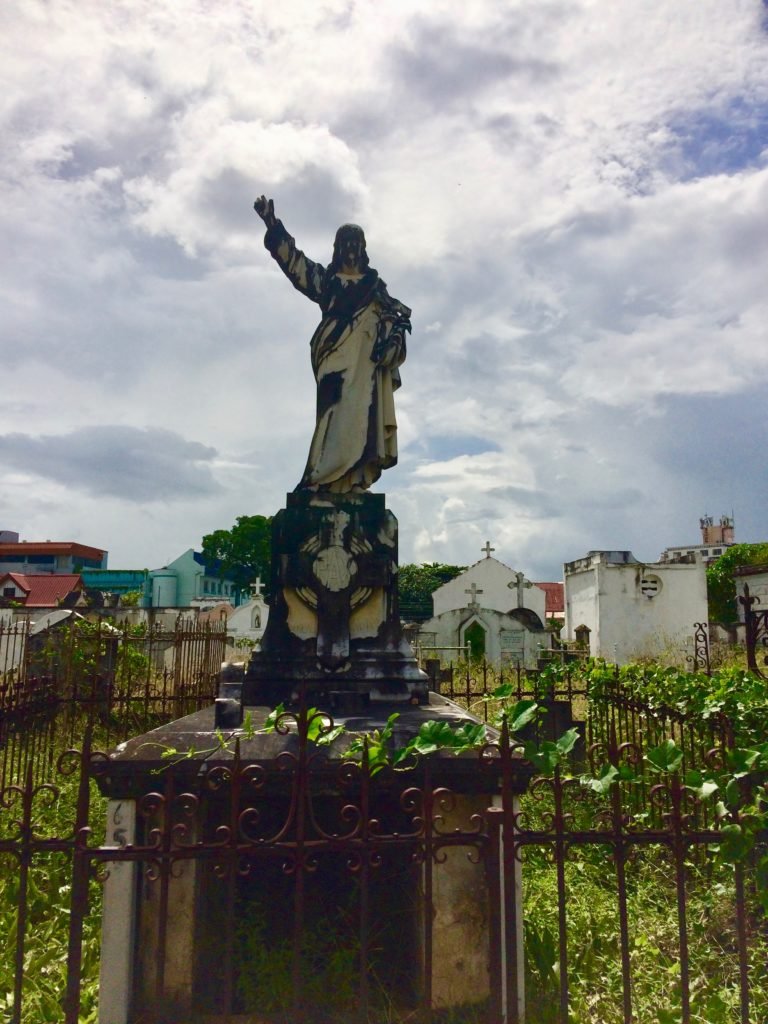
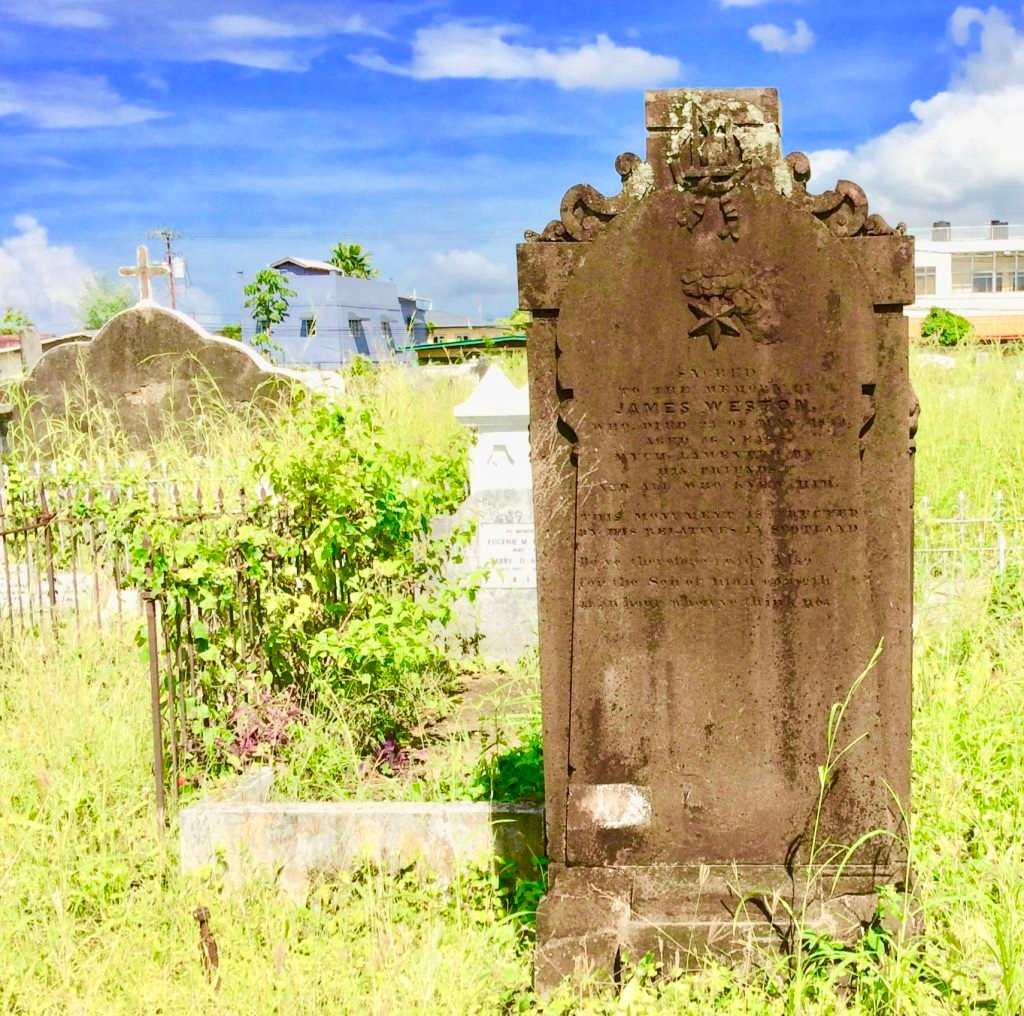


Gingerbread House

Styled after Port-of-Spain’s characteristic Gingerbread house. Notice the fretwork at the top.
Notable Family Mausoleums
The Ribeiro Family Vault
Joaquim Ribeiro, born in Madeira to a family of wine-makers, came to Trinidad in 1882. He began in a small-scale business with a rumshop, named Railway Bar near the railway station in what is now Citygate.
Joaquim, his wife and children are buried inside the Ribeiro tomb.


The Ribiero tomb is made from blocks of solid Italian white marble in the gothic style and roofed with slate.
An intricate marble relief depicting Christ and four angels is inlaid over the door.
Mausoleum of La Familia Blanc Trujillo
The Blanc Trujillo family were an important family from Venezuela who settled in Port of Spain in the 1860’s after fleeing political unrest in their homeland.



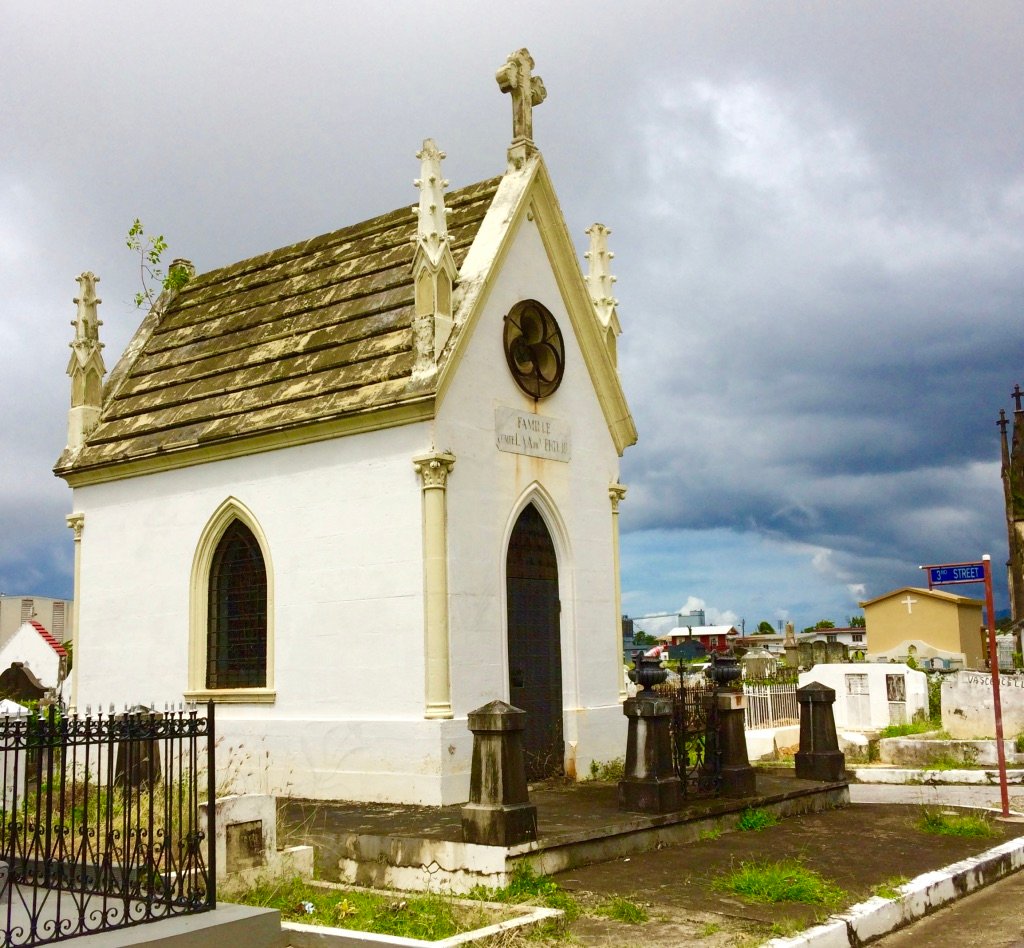
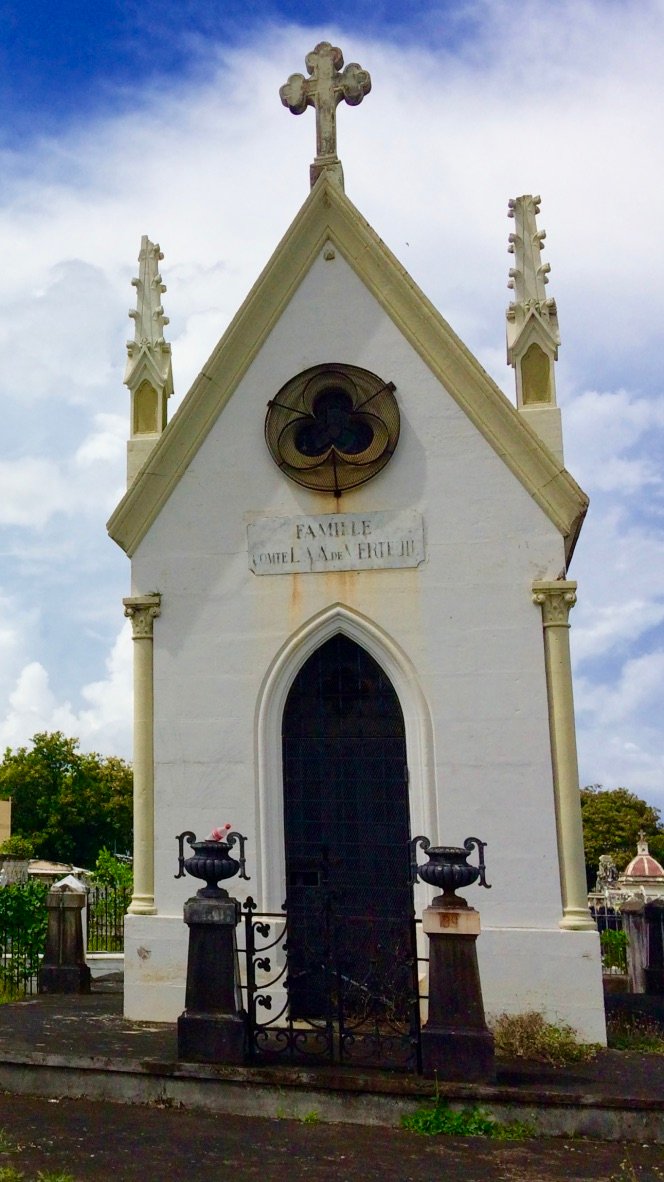


Visiting a cemetery sure puts a new perspective on life. It encourages you to live life to the fullest; to appreciate life for what it’s worth and make the most of it.
The Mausoleum of William Gordon Gordon
At the corner of Lapeyrouse cemetery, bounded by Tragarete Road and Colville Street, William built a magnificent tomb in memory of his beloved wife, Gertrude Maude. It was built by Taylor and Gillies who had constructed the Knowsley mansion. Gordon died in 1923 and was buried in the crypt next to his wife.

The tomb is made of local limestone and Italian marble, with Scottish wrought iron and Corinthian columns.

Wiiliam made his greatest statement of wealth in the palatial home he built around Queen’s Park Savannah in 1904. His house was sold to the Government in 1956 for $250,000 and is now the Ministry of Foreign Affairs.


Joseph Leon Agostini, a cocoa estate owner bought a piece of land in St. Clair, 29 Maraval Road for £1,000. On this land in 1904, one of the Magnificent Seven, White Hall, originally called Rosenweg was built.

House of Siegert Family

Dr. J.G.B. Siegert, founder of the House of Angostura, famous for the production of Angostura bitters and rum.

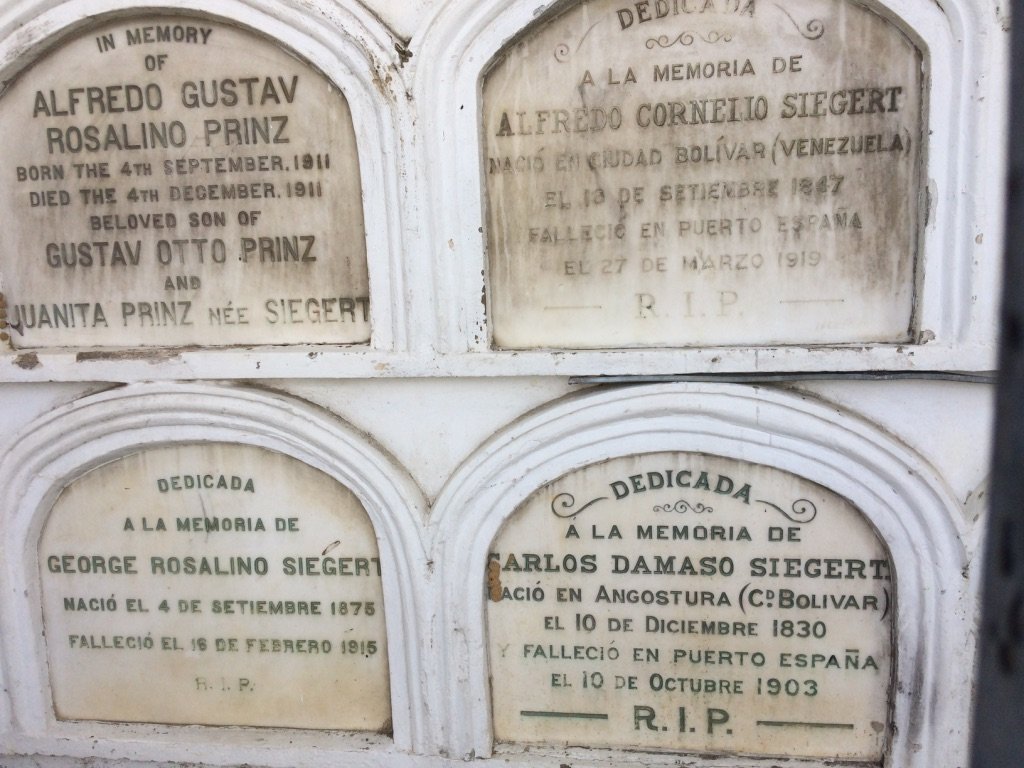


C.E.H. Boissière built the Boissière House in 1904, also called the “Gingerbread House” for his wife Alice. Boissière House is still owned by descendants of the Boissière family.
The Cipriani family is of ancient Italian origin.
Captain A.A. Cipriani, the ‘Champion of the Barefooted Man’ was a Trinidad and Tobago labour leader and politician.

The Cipriani College of Labour and Co-operative Studies is named after him. Cipriani Boulevard, connecting Tragarete Road with Queen’s Park Savannah was named in memory of Emmanuel Cipriani, Captain A.A. Cipriani’s uncle.
William Nicol

Michel-Jean Cazabon
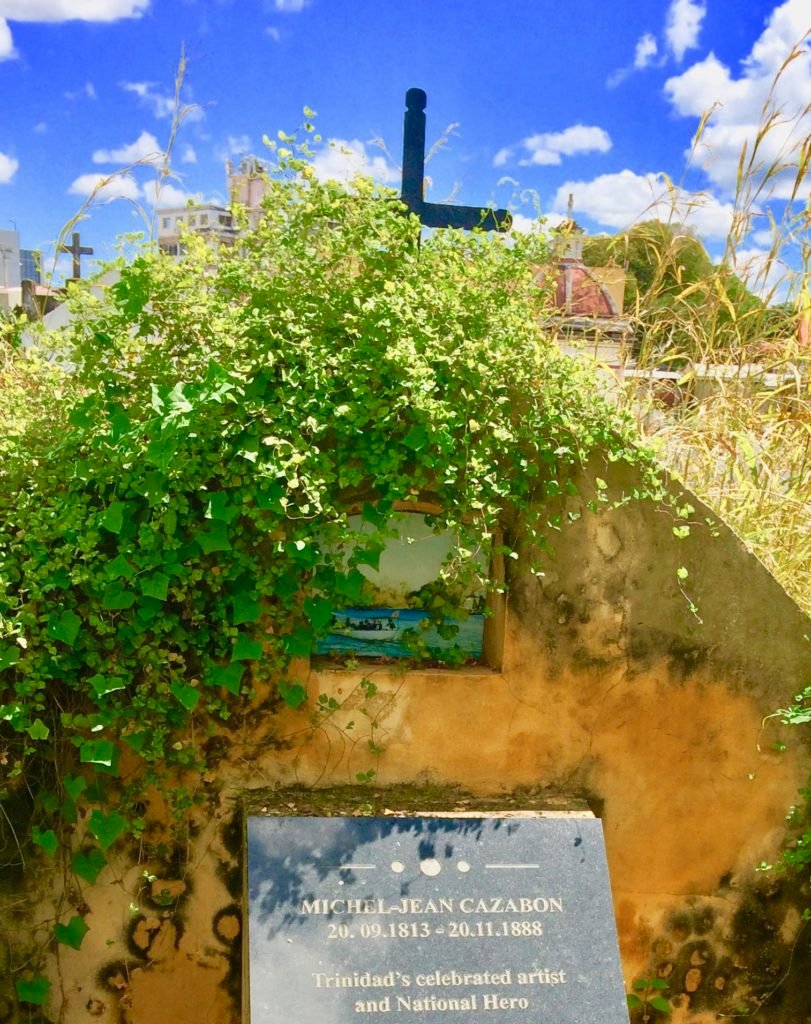

Gene Miles


Gene Miles was a female political activist in the 1960’s. She is a symbol of resistance
The Catholic Graves


All the Dominican Sisters of Trinidad and Tobago are interred at Lapeyrouse (except for those buried at Chacachacare), along with the Sisters of Rosary Monastery, the Dominican Fathers and diocesan priests.
See the list of names of all the Dominican Sisters buried there.
I will admit, after trekking through this area, I am no longer afraid to watch The Nun. Also, I have visited the graves of the nuns buried at Chacachacare. However, Lapeyrouse is my first visit to a cemetery on the mainland. Rumor has it that a part of the movie, The Nun was filmed there. Coincidence that I visited both? Hmmm…..
Other Interesting graves

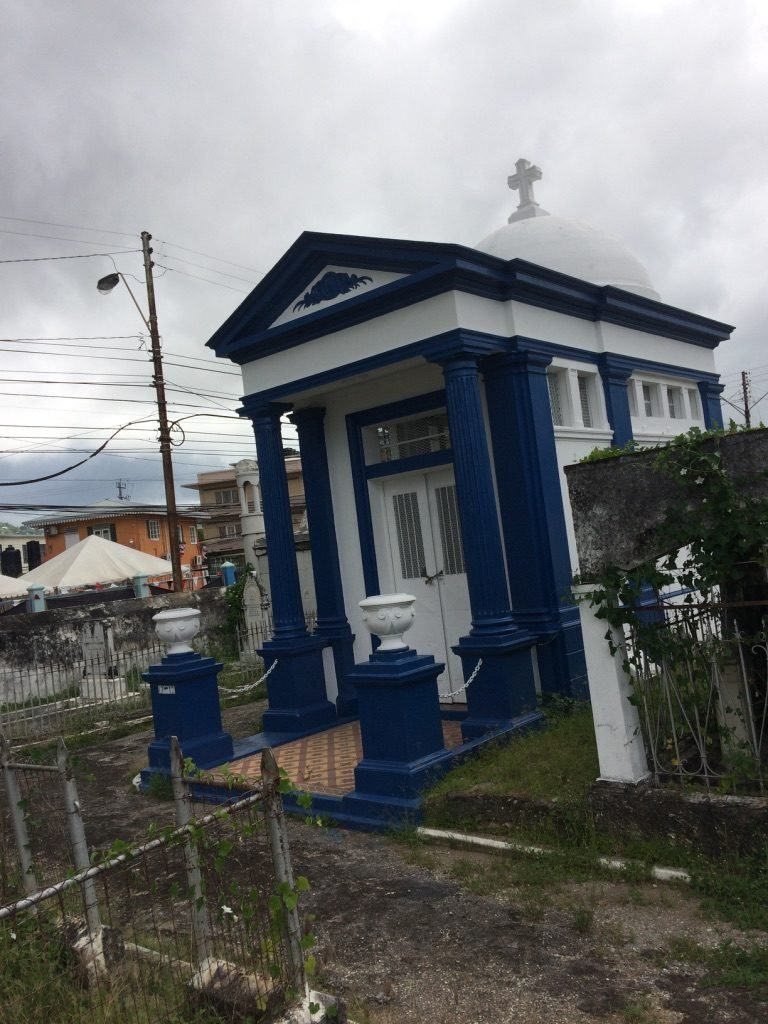


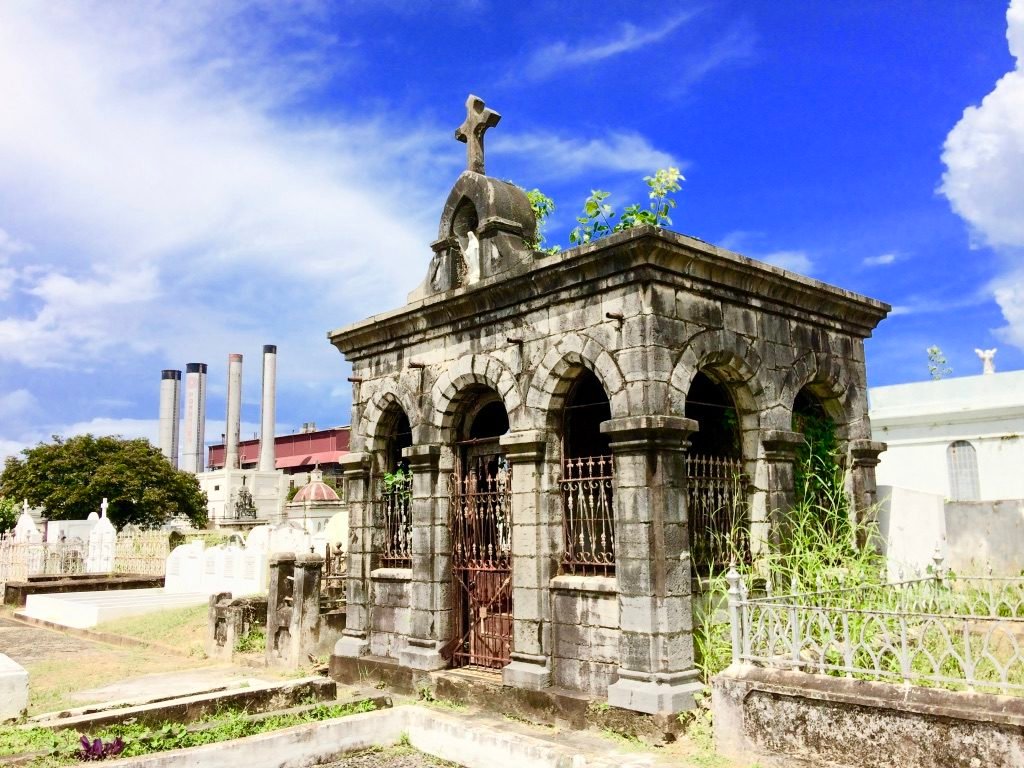

Lapeyrouse Cemetery is a reflection of the diversity of our people and cosmopolitan society. It’s like a walk-in history book that stores our past and shapes the present. We hope you can appreciate the history, art, architecture and beauty present beyond the cemetery walls. Cemetery keeper Hans Schuler had the right idea when it came to burying without segregation.
It matters not the colour of your skin, the language of your tongue, the religion you follow or your financial status. We’re all going to that same place in the end…HOME.
“Maybe death is the great equalizer, the one big thing that can finally make strangers shed a tear for one another.”
~Mitch Albom (author of Tuesdays with Morrie)
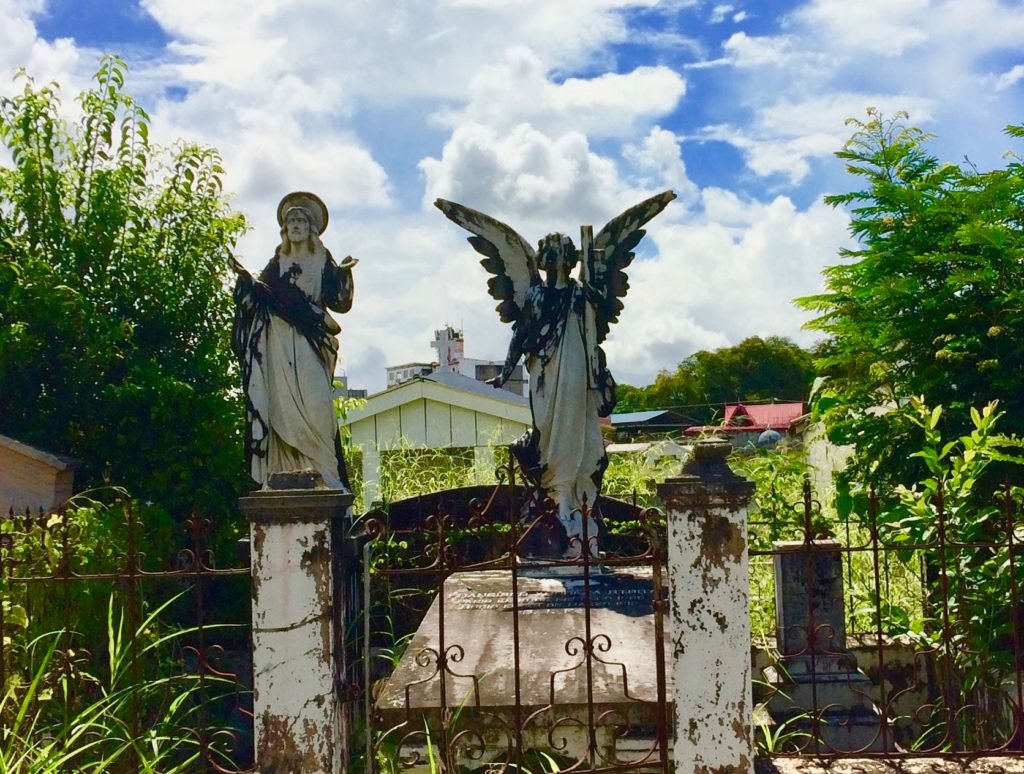
Special thanks (in no particular order) to:
*Port-of-Spain Corporation, City Hall for permission to take photos in Lapeyrouse Cemetery
*The Administrative staff, Gravediggers, especially Nigel Lee Young at Lapeyrouse Cemetery
*The librarian, Dyan Peterson at the NALIS Tunapuna Public Library for her assistance in sourcing Bissessarsingh’s book
*Gérard Besson , for permission to use historical anecdotes from The Caribbean History Archives
*Angelo Bissessarsingh, founder of the Virtual Museum of Trinidad and Tobago, historian and author of Walking with the Ancestors-The Historic Cemeteries of Trinidad (2013) from which all other historical anecdotes and information supplied in this post was used. Such a great educational resource. May his soul rest in peace.
We dedicate this last post to our recently departed calypsonians: The Mighty Shadow (23/10/2018) and The Original De Fosto Himself (2/11/2018).
Rest in peace.
References:
- Besson, G. A. The Caribbean History Archives, by Paria Publishing Co. Ltd.
- Bissessarsingh, A. (2013). Walking with the Ancestors-The Historic Cemeteries of Trinidad. Queen Bishop Publishing.
- National Library and Information System Authority (NALIS) website
- National Trust of Trinidad and Tobago
Very informative article. I appreciate the histories behind these ornate tributes to the departed.
Wow. i really love this post, Nadine. I would be honest, i respect the dead and all the extravagant gravestones that are built for them but I honestly never really got a closer look/mindset toward them until reading your post. It brought a whole new perspective on it and a great insight.
Looking at these graves, reading the history behind them and the awesome quotes to start and end it off, somehow brews a great story that will one day come to me!
Keep it up, Nadine! I really enjoy the time, energy and passion you put into your blogs and that is very admirable.